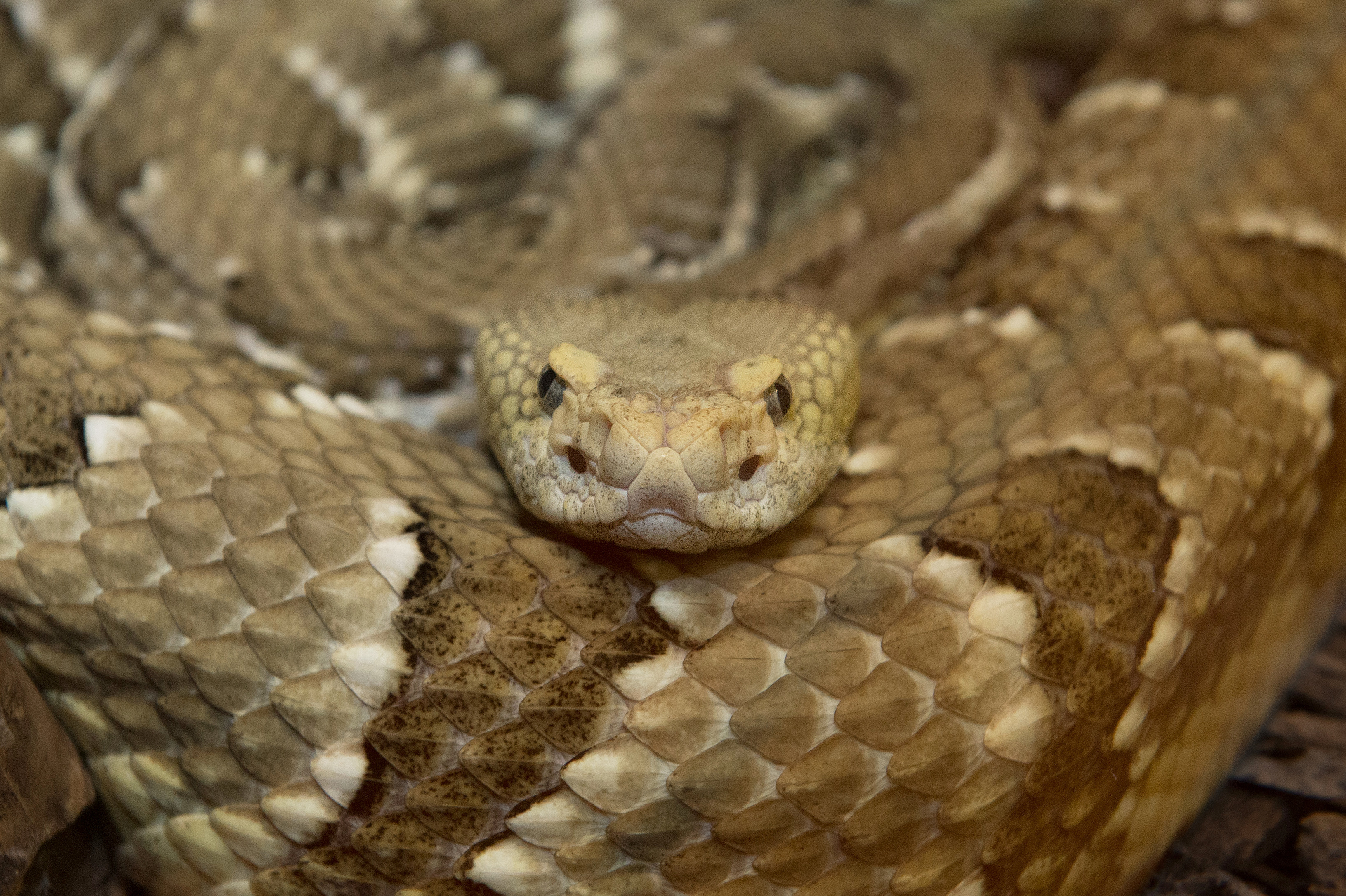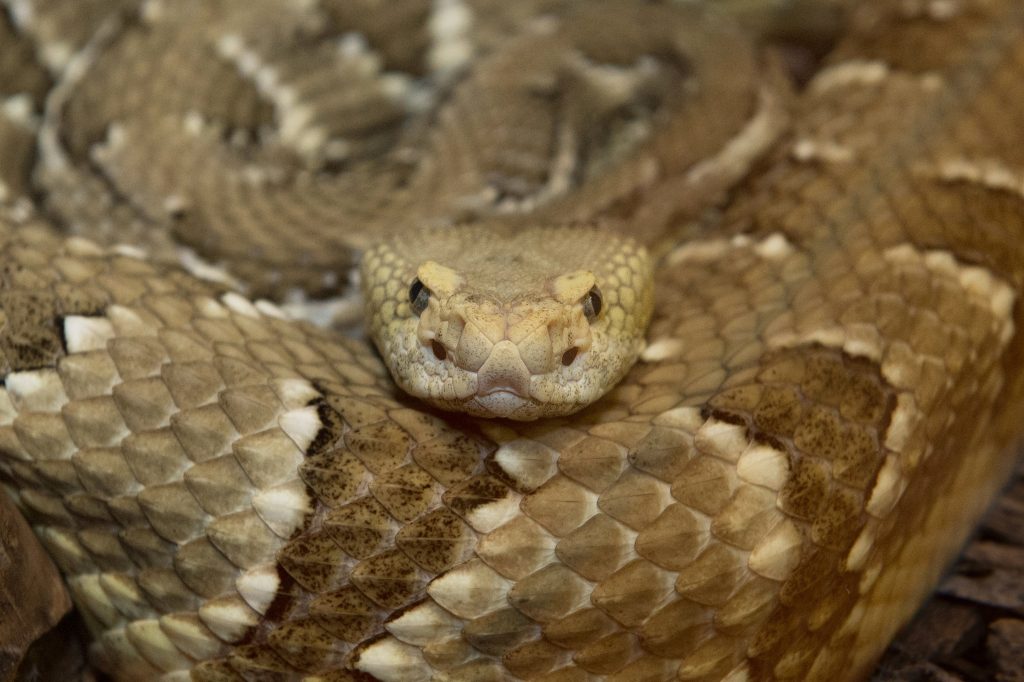Rattlesnakes and pit vipers are two of the most notorious venomous snakes in the world. However, many people are unaware of the relationship between these two species. So, is a rattlesnake a pit viper? Let’s explore the fascinating world of these deadly reptiles and find out the answer.
As we delve into the topic, we will discover what makes a pit viper a pit viper and why rattlesnakes are often included in this group. We will also look at the characteristics of both species and how they have adapted to survive in their respective habitats. So, buckle up and prepare to learn about the fascinating world of venomous snakes.
Yes, a rattlesnake is a type of pit viper. Pit vipers, also known as Crotalinae, are a subfamily of venomous snakes that have heat-sensing pits on their faces, which they use to locate prey. Rattlesnakes are part of this subfamily and are known for their distinctive rattles at the end of their tails.

H2: Is a Rattlesnake a Pit Viper?
Have you ever heard the term “pit viper” used to describe a snake? You may be wondering if a rattlesnake falls into this category. In short, the answer is yes. But let’s dive deeper into what makes a snake a pit viper.
H3: What is a Pit Viper?
Pit vipers are a group of venomous snakes that are characterized by the heat-sensing pits located between their nostrils and eyes. These pits allow pit vipers to detect the body heat of their prey, which helps them to hunt more effectively. Pit vipers are also known for their triangular-shaped heads and vertical pupils.
There are two subfamilies of pit vipers: the Crotalinae, which includes rattlesnakes, copperheads, and cottonmouths, and the Azemiopinae, which includes the Chinese mountain pit viper.
H3: Characteristics of Rattlesnakes
Rattlesnakes are a type of pit viper that are found throughout North and South America. They are known for the rattle at the end of their tail, which they use as a warning to potential predators. Rattlesnakes have triangular-shaped heads, vertical pupils, and the heat-sensing pits that are characteristic of all pit vipers.
There are over 30 species of rattlesnakes, ranging in size from the tiny Santa Catalina Island rattlesnake to the massive eastern diamondback rattlesnake. Rattlesnakes are also known for their venom, which can be lethal to humans.
H3: Differences Between Rattlesnakes and Other Pit Vipers
While rattlesnakes are a type of pit viper, there are some differences between them and other members of the Crotalinae subfamily. For example, copperheads and cottonmouths don’t have rattles at the end of their tails. Additionally, some species of pit vipers, like the bushmaster, can grow larger than even the largest rattlesnakes.
One notable difference between rattlesnakes and other pit vipers is their behavior. Rattlesnakes are more likely to rattle and give a warning before striking, while other pit vipers may strike without warning.
H3: Benefits of Pit Vipers
While pit vipers may seem scary, they play an important role in their ecosystems. As top predators, they help to control populations of rodents and other small animals. Additionally, their venom has potential medical uses, such as in the development of antivenom and painkillers.
H3: How to Identify a Pit Viper
If you come across a snake and are wondering if it’s a pit viper, there are a few key things to look for. First, check for the heat-sensing pits between the nostrils and eyes. Pit vipers also have triangular-shaped heads and vertical pupils.
If you’re still not sure, you can look for other characteristics like a rattle at the end of the tail (in the case of rattlesnakes), or a distinctive pattern or coloration.
H3: What to Do if You Encounter a Pit Viper
If you come across a pit viper, it’s important to stay calm and give the snake plenty of space. Remember that pit vipers are venomous and can be dangerous, so it’s best to avoid them if possible.
If you are bitten by a pit viper, seek medical attention immediately. Don’t try to suck out the venom or use a tourniquet, as these methods can actually make the situation worse.
H3: Conclusion
In conclusion, a rattlesnake is indeed a type of pit viper. Pit vipers are characterized by their heat-sensing pits, triangular-shaped heads, and vertical pupils. While they may seem scary, pit vipers play an important role in their ecosystems and have potential medical uses. If you encounter a pit viper in the wild, remember to stay calm and give the snake plenty of space.
Frequently Asked Questions
What is a pit viper?
A pit viper is a type of venomous snake that belongs to the family Viperidae. These snakes have specialized heat-sensing pits on their faces that allow them to detect prey even in complete darkness. Pit vipers are found all over the world and include species such as rattlesnakes, copperheads, and cottonmouths.
Most pit vipers are characterized by their large, triangular heads, thick bodies, and distinctive patterns of scales. They are known for their potent venom, which they use to immobilize their prey and defend themselves from predators.
What are the characteristics of a rattlesnake?
Rattlesnakes are a type of pit viper that are found primarily in the Americas. They are known for their distinctive rattle, which they use to warn potential threats and predators. Rattlesnakes have triangular heads, thick bodies, and distinctive patterns of scales that vary depending on the species.
Rattlesnakes are venomous and can deliver a powerful bite if provoked. They are primarily ambush predators and feed on small mammals, birds, and reptiles. Most species of rattlesnakes are active during the day and hibernate during the winter months.
How venomous are pit vipers?
Pit vipers are some of the most venomous snakes in the world. Their venom is a complex mixture of enzymes and proteins that can cause a range of symptoms, including pain, swelling, and tissue damage. In severe cases, pit viper bites can be fatal.
However, it’s important to note that not all pit vipers are equally venomous, and the severity of a bite can vary depending on factors such as the size and health of the snake, the location of the bite, and the age and health of the victim.
What is the difference between a pit viper and a non-venomous snake?
The main difference between pit vipers and non-venomous snakes is the presence of venom. Pit vipers have specialized glands that produce venom, which they deliver through their fangs when they bite. Non-venomous snakes, on the other hand, do not produce venom and rely on other means, such as constriction, to subdue their prey.
Other differences between pit vipers and non-venomous snakes include the shape of their heads and the patterns on their scales. Pit vipers typically have large, triangular heads and distinctive patterns of scales, while non-venomous snakes have more rounded heads and less distinct scale patterns.
Are all rattlesnakes considered pit vipers?
Yes, all rattlesnakes are considered pit vipers. Rattlesnakes are a type of venomous snake that belong to the family Viperidae, which includes other pit vipers such as copperheads and cottonmouths. Rattlesnakes are known for their distinctive rattle, which they use to warn potential threats and predators.
Like other pit vipers, rattlesnakes have specialized heat-sensing pits on their faces that allow them to detect prey even in complete darkness. They also have triangular heads, thick bodies, and distinctive patterns of scales that vary depending on the species.
Rattlesnakes of Arizona – 9 species of venomous pit vipers from Sonoran desert
In conclusion, while it may seem like a simple question, “Is a rattlesnake a pit viper?” has a more complex answer than you might expect. While rattlesnakes are indeed venomous snakes with a distinctive rattle, they are not classified as pit vipers. Instead, they belong to the family Viperidae, along with other venomous snakes such as copperheads and cottonmouths.
However, this doesn’t make rattlesnakes any less fascinating or important to the ecosystem they inhabit. These snakes play a vital role in controlling rodent populations and are an important food source for predators such as hawks and eagles. Understanding the unique characteristics of different snake species, including pit vipers and non-pit vipers like rattlesnakes, can help us better appreciate and protect the diverse wildlife around us.
Ultimately, whether you encounter a pit viper or a rattlesnake in the wild, it’s important to remember to give these animals the respect they deserve. Keep a safe distance, avoid handling them, and if you do get bitten, seek medical attention immediately. With proper precautions and a little knowledge, we can coexist safely and peacefully with these fascinating creatures.


